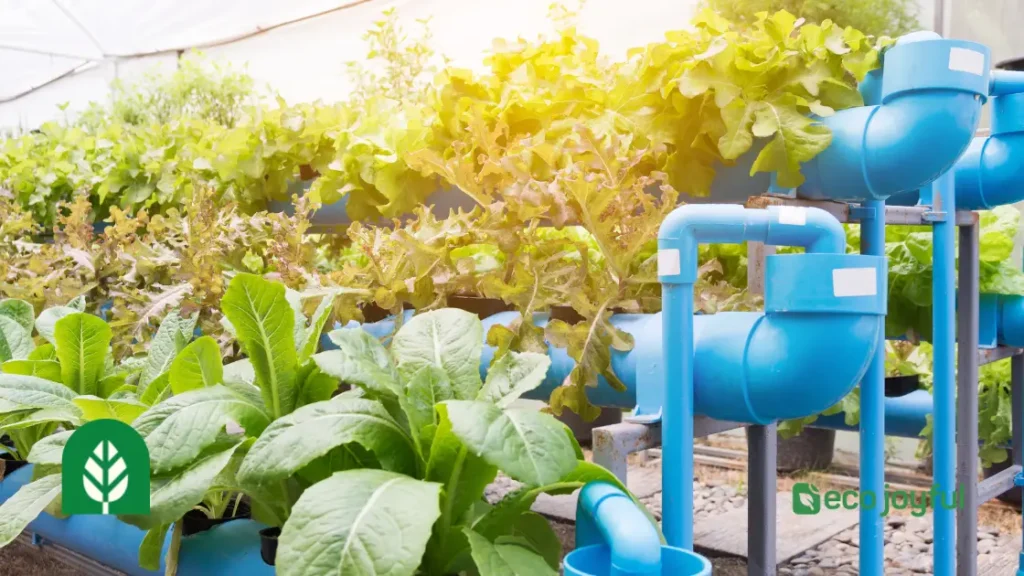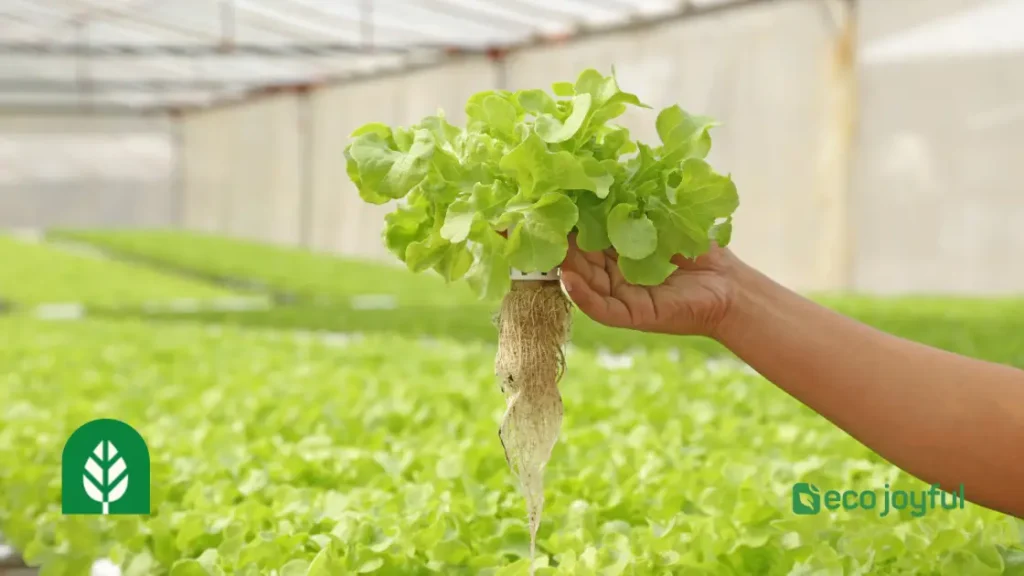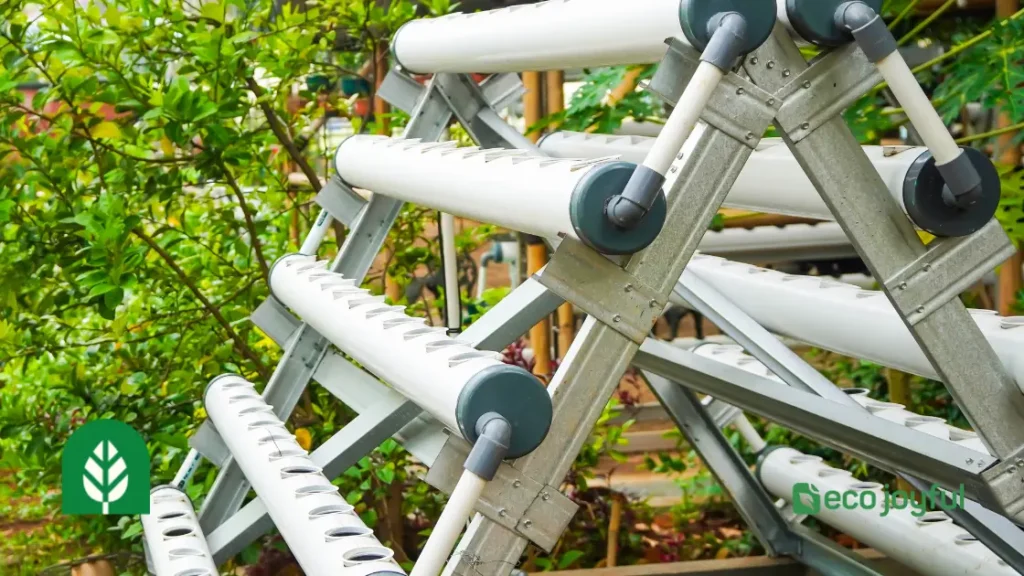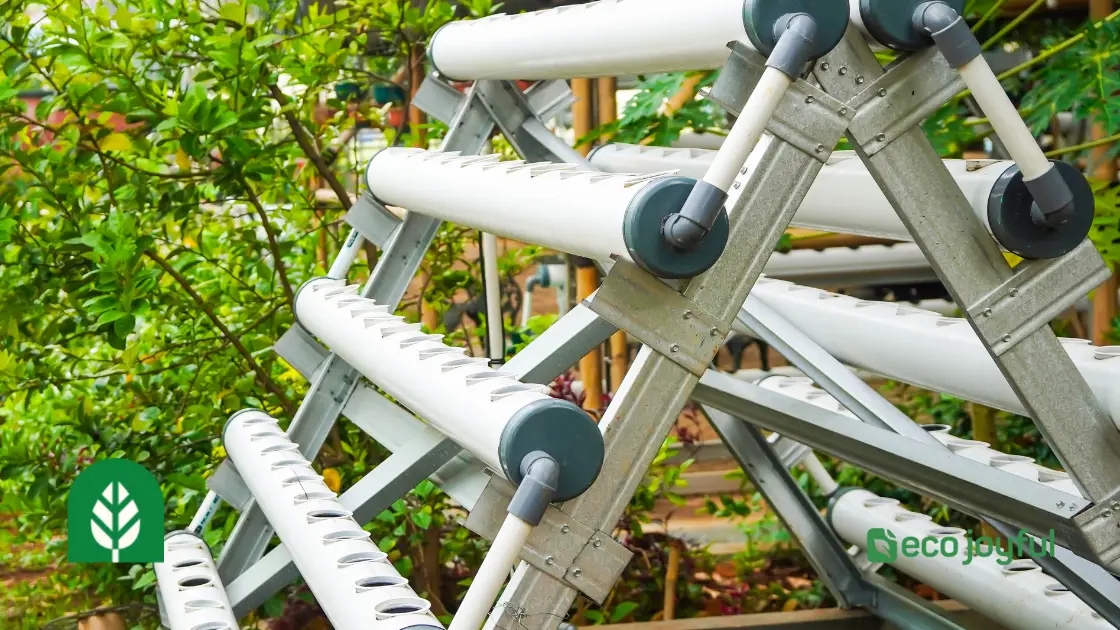A Home Grown Hydroponic Mini Garden allows for soil-free gardening indoors. It uses nutrient-rich water to grow plants efficiently.
Hydroponic mini gardens are becoming increasingly popular for urban dwellers and hobbyists. These compact systems provide a sustainable way to grow fresh herbs, vegetables, and flowers indoors year-round. They require minimal space and maintenance, making them ideal for small apartments or homes without outdoor gardens.
The controlled environment ensures optimal growth conditions, leading to faster and healthier plant development. With a hydroponic system, you can enjoy the benefits of gardening regardless of the season or weather conditions. It’s an excellent way to practice sustainable living and enjoy fresh, home-grown produce.
Table of Contents

Introduction To Hydroponics
Hydroponics is a method of growing plants without soil. Instead, plants grow in a nutrient-rich water solution. This technique is perfect for small spaces and urban areas. It allows anyone to grow fresh vegetables and herbs at home.
The Rise Of Urban Gardening
Urban gardening has become very popular. Many people live in cities with limited space. They want fresh, healthy food. Urban gardening provides a solution. It allows people to grow food on balconies, rooftops, and indoors. Hydroponics is an excellent choice for urban gardening. It uses less water and space than traditional gardening.
Basics Of Hydroponic Systems
Hydroponic systems come in various types. Each has its unique features and benefits. Here are some basic systems:
- Nutrient Film Technique (NFT): Plants grow in a thin film of nutrient solution.
- Deep Water Culture (DWC): Roots float in a nutrient-rich water solution.
- Wick System: Nutrients are drawn up through a wick to the plant roots.
- Drip System: Nutrient solution is dripped onto the base of each plant.
Each system has pros and cons. Choose one that fits your space and needs. Hydroponic systems are easy to set up and maintain. They also yield faster-growing, healthier plants.
| System | Pros | Cons |
|---|---|---|
| NFT | Efficient use of nutrients, minimal water use | May require frequent monitoring |
| DWC | Simple setup, excellent oxygenation | Water temperature must be controlled |
| Wick System | Low cost, low maintenance | Not suitable for large plants |
| Drip System | Great for large plants, precise nutrient delivery | Can be complex to set up |
Starting a hydroponic mini garden at home is fun and rewarding. You will enjoy fresh produce year-round. Happy gardening!
Choosing Your Crops
Choosing the right crops for your home-grown hydroponic mini garden is crucial. The right mix of plants can make your garden flourish. You need to consider the growth habits, space, and light requirements of each plant.
Best Plants For Home Grown Hydroponic Mini Garden
Beginners should start with easy-to-grow plants. These plants adapt well to hydroponic systems. Below are some of the best options:
- Lettuce – Grows quickly and needs little maintenance.
- Spinach – Thrives in hydroponic setups and is nutrient-rich.
- Herbs – Basil, mint, and parsley are excellent choices.
- Strawberries – Offer a rewarding harvest with minimal effort.

Mixing Edible And Ornamental Plants
Combining edible and ornamental plants can make your garden both beautiful and useful. Here are some tips:
- Choose Compatible Plants – Ensure both types of plants have similar growth needs.
- Space Management – Place taller plants at the back and shorter ones in front.
- Light Requirements – Group plants with similar light needs together.
Here is a table to help you mix edible and ornamental plants:
| Edible Plants | Ornamental Plants |
|---|---|
| Lettuce | Marigolds |
| Spinach | Petunias |
| Herbs | Begonias |
By carefully choosing your crops, you can create a thriving hydroponic mini garden that is both functional and beautiful.
Designing Your Mini Garden
Designing your home grown hydroponic mini garden requires creativity and planning. A well-designed garden maximizes space and enhances your home’s beauty. Let’s explore some tips and tricks to create the perfect mini garden.
Space-saving Layouts
Space is often limited in homes. Optimize every inch by using vertical and horizontal space wisely.
- Vertical Gardens: Use wall-mounted planters or shelves.
- Stackable Systems: Utilize stackable hydroponic systems for more plants.
- Hanging Gardens: Employ hanging pots for herbs and small plants.
Consider a modular system. It allows easy rearrangement and expansion. This approach adapts to growing needs.
Aesthetic Considerations
A mini garden should be visually pleasing. Combine function with beauty for a stunning result.
| Element | Tips |
|---|---|
| Planter Design | Choose planters that match your home decor. |
| Color Scheme | Use a consistent color palette for harmony. |
| Lighting | Add grow lights with stylish designs. |
Adding decorative elements like pebbles and small figurines can enhance the look. Choose items that reflect your personal style.
Use plants of varying heights and textures. This creates a dynamic and engaging visual.
Setting Up The Hydroponic System
Setting up a hydroponic system at home can be fun and rewarding. You can grow fresh vegetables and herbs all year round. Let’s walk through the steps to get started.

Selecting The Right Container
Choosing the right container is crucial for your hydroponic garden. A container should be sturdy and non-toxic. It should also hold enough water for your plants.
Here are some popular container options:
- Plastic bins
- Glass jars
- Net pots
Make sure the container is lightproof. This helps prevent algae growth.
Assembling The Hydroponic Components
Assembling the hydroponic components is the next step. Here is a simple list of what you need:
- Water reservoir: This holds the nutrient solution.
- Air pump and air stone: They oxygenate the water.
- Grow lights: Provide light for plant growth.
- Net pots: Hold the plants in place.
- Growing medium: Supports the plant roots.
Follow these steps to assemble your system:
| Step | Description |
|---|---|
| 1 | Place the water reservoir in a suitable spot. |
| 2 | Install the air pump and air stone in the reservoir. |
| 3 | Set up the grow lights above the reservoir. |
| 4 | Position the net pots in the reservoir lid. |
| 5 | Add the growing medium to the net pots. |
Now your hydroponic system is ready. You can plant your seeds and watch them grow!
Lighting And Climate Control
Creating the perfect environment for your homegrown hydroponic mini garden is essential. Proper lighting and climate control ensure your plants thrive. Let’s dive into the specifics of choosing to grow lights and maintaining ideal growing conditions.
Choosing Grow Lights
Grow lights are crucial for indoor gardening. They mimic natural sunlight, helping plants to grow. Here’s how to choose the best grow lights:
- LED Lights: Energy-efficient and long-lasting.
- Fluorescent Lights: Affordable and suitable for small spaces.
- HID Lights: High intensity, ideal for larger setups.
Consider the light spectrum. Plants need blue and red light for growth. Blue light promotes leafy growth. Red light encourages flowering and fruiting. Choose lights that offer a full spectrum for the best results.
Maintaining Ideal Growing Conditions
Maintaining the right climate is vital for plant health. Here’s a breakdown of the key factors:
| Factor | Optimal Range |
|---|---|
| Temperature | 65-75°F (18-24°C) |
| Humidity | 50-70% |
| Air Circulation | Ensure good airflow with fans |
Keep the temperature within the optimal range. Use heaters or air conditioners if necessary. Maintain humidity levels with a humidifier or dehumidifier. Ensure proper air circulation. This prevents mold and helps plants breathe.
Monitoring these factors regularly ensures your hydroponic garden flourishes. Happy gardening!
Nutrient Solutions And Ph Balance
Creating a successful home-grown hydroponic mini garden requires attention to nutrient solutions and pH balance. Plants need the right nutrients and pH levels to grow well. Proper management of these factors ensures healthy and vibrant plants.
Mixing Nutrients For Optimal Growth
Mixing the right nutrients is crucial for your hydroponic garden. Plants need a balanced mix of macronutrients and micronutrients. Use a nutrient solution specifically designed for hydroponics.
- Macronutrients: Nitrogen (N), Phosphorus (P), Potassium (K)
- Micronutrients: Iron (Fe), Manganese (Mn), Zinc (Zn), Copper (Cu), Boron (B), Molybdenum (Mo)
Follow the instructions on the nutrient solution package. Typically, you will dilute the solution with water to the recommended concentration. Use a clean container and measure accurately for best results.
Monitoring And Adjusting Ph Levels
pH balance is vital in hydroponics. The pH level affects nutrient availability to plants. The ideal pH range for most hydroponic plants is between 5.5 and 6.5.
Use a pH meter or pH test strips to monitor the pH levels. Check the pH level at least once a week. Adjust the pH if it goes outside the ideal range.
| pH Range | Action Required |
|---|---|
| Below 5.5 | Add a pH Up solution |
| Above 6.5 | Add a pH Down solution |
Always add pH solutions slowly and in small amounts. Stir the nutrient solution well and recheck the pH. Repeat the process until the desired pH is achieved.
By maintaining the correct nutrient levels and pH balance, your hydroponic mini garden will thrive.
Daily And Weekly Maintenance
Maintaining a home grown hydroponic mini garden requires regular attention. Daily and weekly tasks ensure plants stay healthy. This section covers essential maintenance routines.
Routine Checks And Balancing
Daily checks are crucial for plant health. Inspect your plants for any signs of pests or disease. Ensure the water level in the reservoir is adequate.
Check the pH level of the nutrient solution daily. The ideal pH range for most hydroponic plants is between 5.5 and 6.5. Use a pH meter for accurate readings.
Weekly checks are also necessary. Monitor the nutrient levels in the solution. Use a nutrient meter to measure the concentration. Adjust the solution if necessary to maintain balance.
Cleaning And Preventing Algae
Cleanliness is vital in a hydroponic garden. Algae can quickly become a problem if not managed.
Follow these steps to keep your system clean:
- Wipe down surfaces daily with a clean cloth.
- Clean the reservoir weekly. Remove old water and scrub the interior.
- Check the tubing for blockages and clean it as needed.
To prevent algae growth, cover the reservoir to block light. Light encourages algae to grow. Use black tubing to prevent light penetration.
Adding an airstone to the reservoir can help. This increases oxygen levels and discourages algae.
Harvesting And Enjoying Your Bounty
There’s nothing more rewarding than harvesting fresh produce from your homegrown hydroponic mini garden. After weeks of care, it’s time to reap the benefits. Learn how to harvest properly and explore creative ways to use your bounty.
When And How To Harvest
Knowing the right time to harvest is crucial. For leafy greens like lettuce and spinach, pick them when the leaves are tender and full-sized. Use clean scissors to cut leaves an inch above the base. This encourages regrowth.
For fruits like tomatoes and strawberries, wait until they are fully colored and slightly soft. Gently twist them off the vine. Herbs such as basil and mint should be harvested before they flower. Snip the top few inches for the best flavor.
| Plant | Harvest Time | Method |
|---|---|---|
| Lettuce | 4-6 weeks | Cut leaves an inch above the base |
| Tomatoes | 8-10 weeks | Twist off when fully colored |
| Basil | 6-8 weeks | Snip the top a few inches |
Creative Uses For Your Homegrown Produce
Once harvested, your fresh produce can be used in many delicious ways. Here are some ideas:
- Leafy Greens: Create vibrant salads or add to smoothies for a nutrient boost.
- Tomatoes: Make homemade salsa, pasta sauce, or caprese salad.
- Herbs: Enhance your dishes with fresh basil pesto or mint tea.
- Strawberries: Enjoy them fresh, in desserts, or blended into a refreshing smoothie.
Experiment with your homegrown produce in new recipes. Your taste buds will thank you!
Troubleshooting Common Issues
Even the best home-grown hydroponic mini gardens can face issues. Knowing how to troubleshoot these problems can keep your garden thriving. Below are solutions to common issues you might encounter.
Dealing With Pests And Diseases
Even in a hydroponic system, pests and diseases can find their way in. Regularly check your plants for signs of trouble.
- Aphids: These tiny bugs can harm your plants. Use insecticidal soap to get rid of them.
- Powdery Mildew: White spots on leaves are a sign. Increase air circulation to combat this.
- Root Rot: Brown, mushy roots indicate this problem. Ensure your system has proper drainage.
Always keep your garden area clean. Remove any dead leaves or plants immediately.
System Failures And Solutions
System failures can disrupt the growth of your plants. Here are some common issues and their fixes:
| Problem | Solution |
|---|---|
| Pump Failure | Check the power supply and connections. Replace the pump if needed. |
| Clogged Tubes | Clean the tubes weekly. Use a soft brush to remove blockages. |
| Nutrient Imbalance | Test the water’s pH level. Adjust the nutrients accordingly. |
Maintaining your system can prevent these issues. Regular checks ensure everything runs smoothly.
Expanding Your Hydroponic Garden
Expanding your home-grown hydroponic garden can be an exciting journey. With the right techniques, you can increase your yield and grow a variety of plants. This section will guide you through scaling up your setup and integrating advanced techniques.
Scaling Up Your Setup
Scaling up your hydroponic garden means adding more growing space or upgrading your system. Start by assessing your current space. Make a plan for how much more room you need. Use vertical space to maximize your garden area. Stacking shelves or adding vertical towers can help.
Invest in larger reservoirs and pumps. This will support more plants. Ensure your lighting system covers the expanded area. LED grow lights are energy-efficient and effective. Consider installing timers for automated lighting and watering.
Integrating Advanced Techniques
Integrating advanced techniques can boost your hydroponic garden’s productivity. The nutrient film technique (NFT) is a popular method. It involves a constant flow of nutrient-rich water over the roots. This ensures plants get the nutrients they need.
Another technique is Deep Water Culture (DWC). Plants grow with their roots submerged in oxygenated water. This promotes faster growth and bigger yields.
Using sensors and automation can also help. Install pH and EC sensors to monitor nutrient levels. Automate your system with controllers for precise adjustments. This ensures optimal growth conditions for your plants.
Here is a table summarizing some advanced techniques:
| Technique | Benefits |
|---|---|
| NFT (Nutrient Film Technique) | Ensures constant nutrient flow, promotes healthy growth |
| DWC (Deep Water Culture) | Faster growth, larger yields |
| Sensors and Automation | Precise monitoring, optimal conditions |
You can make the most of your hydroponic garden by scaling up and integrating advanced techniques. Grow more plants, improve yields, and enjoy the benefits of home-grown produce.
Conclusion
Creating a home-grown hydroponic mini garden is simple and rewarding. It offers fresh produce year-round. Embrace this sustainable method to enjoy healthier, home-grown vegetables. Start small, and watch your garden thrive. This eco-friendly practice benefits both your health and the environment.
Dive into hydroponics and transform your home into a green oasis.








